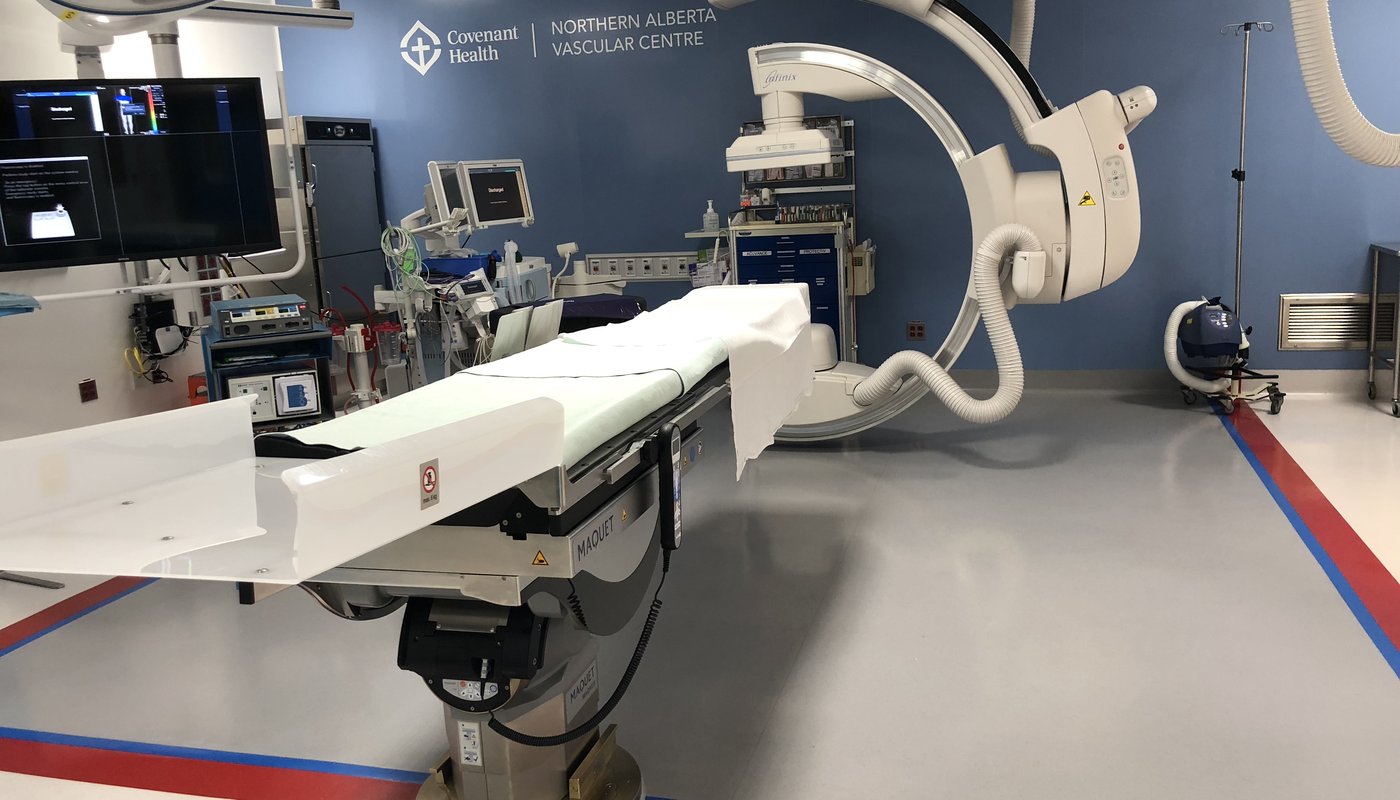Vascular Surgery

The Division of Vascular Surgery leads in every vascular category across Canada and gives presentations both nationally and globally. It accesses Northern Alberta Vascular Centre's brand new, advanced hybrid operating rooms
Research
The division is a leader in curcumin (a turmeric ingredient) treatment research. Other research includes: arteriovenous access creation and maturation; and post-operative outcomes following endovascular aortic surgery. Analysis based on North America's Vascular Quality Initiative - a database tool where the division can compare its results across the continent - creates a massive potential for clinical research.
Teaching
The division offers rotations for undergraduate and postgraduate learners, who experience a very busy full spectrum of vascular disease cutting edge treatments - about 1,600 cases a year.
It hosts undergraduate rotations from other medical schools across Canada and gets positive feedback from the experience the learners have gained: Sometimes it's just seeing a different way of doing things, and sometimes it's about trying to gain connections for the future. The division has had excellent results from these electives.
The division offers one to three-month rotations for vascular residents currently enrolled in a Royal College-accredited program.
Facilities and Technology
The Northern Alberta Vascular Centre is located in the Grey Nuns Hospital. The centre is comprised of several different units working in concert, including a pre-admission clinic and state-of-the-art operating rooms with two dedicated theatres for vascular surgery. More dedicated vascular surgery theatres are planned.
Unit 41 has an on-site rehabilitation area and extensive physician and pharmacy support. The Intermediate Care Unit is dedicated to vascular surgery attached to Unit 41.
In summer 2018, the division will access two hybrid operating suites in Grey Nuns hospital. They are specialized diagnostic imaging suites integrated into an operating room environment. The suites include fixed ceiling mounted imaging with the latest equipment and software available from Toshiba, allowing substantially improved image quality and significant reductions in radiation exposure to patients and staff, and with even further reductions in contrast administration.
This will push the envelope of current options for endovascular treatments from the aortic arch to the head and neck and all extremities.
Clinical
The division is in Vascular Quality Initiative (VQI), which notifies the division of outlier results, allowing surgeons to target those issues and improve that patient outcome measure by programmatic changes and other steps. It validates what the division is doing and how it's doing it. This validation is across many regions, that include multiple centres in Canada. For example, within Canada, the team has the lowest amount of radiation and lowest amount of contrast delivery for endovascular daneurysm repair - it is doing very safe vascular surgery, benefiting the patients served by the division.
VQI also allows improvements to the way surgeons are treating patients and follow through programs - often patients are not on the medication that they should be and the quality initiative helps track that deficiency and rectify it to improve patient outcomes.